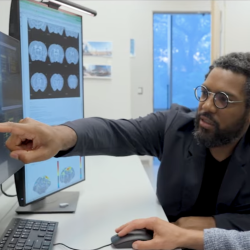Beyond the Paper: A Conversation with Ph.D. Candidate Ruilong Hu and Dr. Ricardo Araneda
Hyperpolarization-activated cyclic nucleotide-gated (HCN) channels play an essential role in neuronal function and network oscillatory dynamics, including the control of membrane excitability and integration of synaptic inputs, the generation of membrane potential oscillations, and subthreshold resonance of neurons. The voltage sensitivity and kinetic properties of the hyperpolarization-activated current (Ih), is dependent on the subunit composition of the channels (HCN1–HCN4), providing a rich heterogeneity to the contribution of these channels to network function. In their eNeuro publication, Hu et al., 2016 examined Ih in granule cells, the predominant type of inhibitory neuron in the olfactory bulb. The authors showed that granule cells exhibit an Ih-dependent subthreshold resonance in the theta frequency range (4–12 Hz). Notably, Ih size and the strength of subthreshold resonance in granule cells exhibited a postnatal developmental progression, suggesting that the development of Ih in granule cells may differentially contribute to their integration of sensory input and contribution to oscillatory circuit dynamics.







